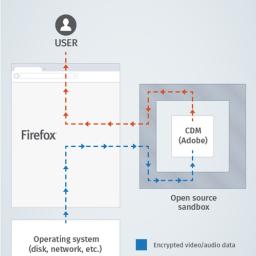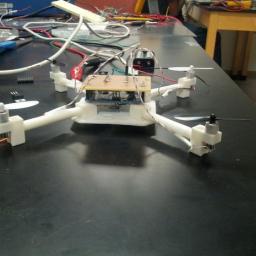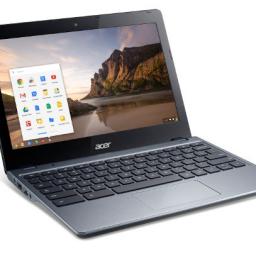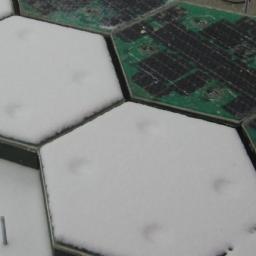
Video streaming sites, such as Netflix and Hulu, have traditionally used non-free plugins, such as Flash and Silverlight, to perform DRM functions. Interest to move these services to the new HTML5 video tag, however, requires a mechanism to handle the DRM naughty bits. The W3C EME specification describes such a beast, but involves a non-free CDM binary.
Here is Mozilla's take on the matter.

Every day tech news is rife with stories about the latest and greatest, but some people don't
want the latest and greatest; they want their old faves. The blogosphere is buzzing this week with the
revelation that
George R.R. Martin , the much-admired author of the
A Game of Thrones and more, actually does his writing on a DOS machine running the old, 1970s word processor,
WordStar .
Should that matter?
I don't think so . Not one bit. In fact, WordStar and DOS have a couple of advantages over more modern hardware and software: probably no Internet connection, no icons, nothing buzzing or beeping or flashing at you. In sum, the perfect environment for focusing on your writing. Judging by the success of GRRM's books, it's working!
What old software do you use? Which old technologies do you hang onto even as the rest of the world chases the newest update?
Here's some good news for everyone except Microsoft:
nine out of ten of the most reliable hosting providers in April 2014 use Linux or FreeBSD as their hosting platform. Microsoft only got one of the ten slots, thanks to Netcetera, a provider specializing in WinServer 2012 hosting. Of the nine top sites, five use Linux and four use FreeBSD. The performance measurements are made at fifteen minute intervals from separate points around the internet, and averages are calculated over the immediately preceding 24 hour period. More detail on the measurement process and stats is available at
Netcraft .

If I were a despotic ruler, I'd have a fleet of computer-controlled flying death machines I could dispatch at a moment's notice to strike down my opponents. Well, I might not be a despot, but I can still have the flying machines. Check out Awesome Awesomeness, who
created his own (her own?) Quadracopter out of an Arduino board and less than $60 in components. A couple of the parts were created on a 3D printer.
All they're missing is the death-laser and, to build out the fleet, about a million more of them. Now I've just got to practice my
evil, madman laugh .

2014 just might be remembered as the
year of the Chromebook . It will be to me at least. I just bought one, and I'm not alone. So have a lot of other people. A whole lot. From the Register:
According to US market-watcher NPD, during the 11 months from January through November 2013, the platform's share of the computing device market had risen to 9.6 per cent from just 0.2 per cent in the same months of the previous year. By contrast, Apple's laptops accounted for a mere 1.8 per cent of the market in 2013, down from 2.6 per cent the year before. Windows-based laptops also declined, though they remain the biggest seller: their combined share fell from 42.9 per cent to 34.1 per cent. Do the sums, and that means Windows laptops took 75 per cent of the US notebook market, Chromebooks 21 per cent and Apple a measly four per cent. Some 6.6 million laptops were shipped through commercial channels, says NPD, of which just under 1.4 million were Chromebooks. Five Chromebooks were sold for every MacBook.
When first released in 2011, they failed to capture the market's attention, as the hardware remained somewhat limited and the software options weren't appealing, but time has been kind to Chromebooks. This year Google and Intel have
partnered to make sure some compelling new hardware was released, including the
ASUS Chromebox desktop , the
21.5" all-in-one by LG , and 20 other models by the likes of HP, ASUS, Acer, Samsung, and Lenovo. CNET is
hugely bullish on Chromebooks; so is
Richi Jennings over at Computerworld.
As for me, I consider myself a power user and I'm not a huge fan of Google's software ecosystem, but I like my new Chromebook. My HP14 is pretty nice hardware, it's running great, I find the user environment hugely useable, and hell - the price was awesome: under $300. It's hard to believe I paid something like $1600 for a PIII laptop and Win98 in 2000.

There's a great article over at Hackaday about
intelligent roadways .
The idea of a road is relatively simple - a durable path from point A to point B. Development of roadways usable for wheeled carriages has been perfected over the centuries. The Romans, for instance, used a base layer of crushed limestone that would let water flow out, preventing clay soil from turning into mud. Some Roman roads were topped with six sided capstones, also known as pavers, many of which still exist today. The invention of the horseless carriage necessitated roadways that could be used at high speeds. Tarmac, asphalt and concrete roads followed, and thus ends our short venture into the history of roads. Roadways simply haven't changed much since then. Sure, we've painted some lines on them, even etched grooves in some to prevent accidents, but the core technology of the road is the same as it was a hundred years ago. Until now.
Check out the design, built by
Solar Roadways (spoiler: they're
looking for funding ). With minor circuitry, these panels absorb solar energy by day, and stay illuminated at night. A mild current melts snow and keeps them ice-free. LEDs can provide the horizontal signage (cross walks, bike lanes, etc.) The possibilities start there. If I had one of these, I'd pave my driveway with them, with a bright, red "Go Away" at the end from 6PM to dawn.
 Video streaming sites, such as Netflix and Hulu, have traditionally used non-free plugins, such as Flash and Silverlight, to perform DRM functions. Interest to move these services to the new HTML5 video tag, however, requires a mechanism to handle the DRM naughty bits. The W3C EME specification describes such a beast, but involves a non-free CDM binary. Here is Mozilla's take on the matter.
Video streaming sites, such as Netflix and Hulu, have traditionally used non-free plugins, such as Flash and Silverlight, to perform DRM functions. Interest to move these services to the new HTML5 video tag, however, requires a mechanism to handle the DRM naughty bits. The W3C EME specification describes such a beast, but involves a non-free CDM binary. Here is Mozilla's take on the matter.


